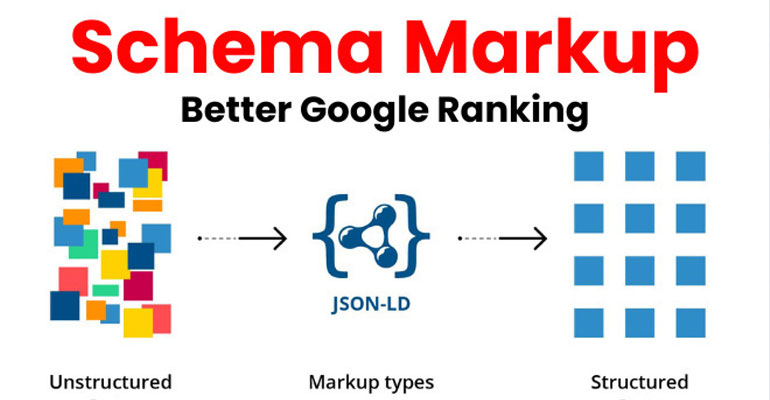This is the world in 2024, and the technology keeps on advancing, and healthcare websites must try to change as well. As there is increase in the number of individual / patient who are using the internet to look up for doctors, treatments or information about any diseases / ailments, it is crucial that your site is easily locatable, easily navigable and is search engine friendly. This is doable through search engine optimization (SEO). However many strategies that were effective sometime back might not be enough to sustain the competitive advantage in the current market.
There are 10 steps which will reflect in the next year healthcare website SEO strategies; If you follow these strategies, your website will rank higher, more patients will visit your business and there will be a better image on your medical services. Let’s get started!
1. Prioritize Page Speed and Performance
Page speed has remained a ranking factor in SEO over the years though; in the year 2024, it is important more than ever in the healthcare website. Since many patients crave information in a timely or emergency basis, the time it takes for the site to load may cost you the visitor. Thus, any website that takes over 3 seconds to load is likely to record high bounce rate, which is un-favorable for SEO.

First, identify your website’s current speed using whatever devise such as; Google PageSpeed Insight or GTMetrix. They give you specific accounts of how your site is faring and recommend measures to enhance its performance. Some are; resizing large images, implementing lazy loading, optimizing JavaScript and utilizing browser caching. Better hosting services may also improve page speed by a big margin through better investments.
Not only is website speed beneficial for SEO purposes, it also plays an essential role in the healthcare industry where the patient’s trust is the ultimate foundation making sure patients have a good experience with your website is important, in this context, making sure the website is fast bearing in mind the bounce rate highlighted up can be an important factor.
2. Optimize for Mobile Devices
Despite the fact that mobiles have become a preferred choice for internet usage, research made four years ahead of the year 2024 reveal that it will be commanded by mobile devices with more than 60%. For healthcare websites, keep the thought of mobile-friendly website mandatory out of the window. The mobile version is the primary version of your website that Google looks at when pulling out its mobile first index index.
But what does all this mean for healthcare websites? First, make sure that a particular website is a responsive one. A responsive design ensures that when a user uses your site on his/her phone, tablet, or a computer, the design and layout of the site changes to fit the screens size. Use different devices on which to try out your site in order to ascertain its compatibility.
There are also things that must be done to the measure about mobile navigation: Seriously consider just what is necessary for easy and smooth navigation on mobile devices. This entails having sufficiently large menus, clear fonts, buttons which can be tapped without causing zooming. Do not neglect contact form and the features for the appointment booking that should allow patients to engage with your site on mobile.
3. Leverage Healthcare-Specific Keywords
The reason is that in case of seeking medical information or medical service, common population prefers to add healthcare relevant keywords. One of the core concepts in SEO applied to a particular healthcare website is keyword research. It is possible to learn the used terms with the help of such tools as Google Keyword Planner, SEMrush or Ahrefs.
High traffic healthcare keywords may be like ‘best doctor in my area’, ‘dermatologist for acne’, or ‘best children’s doctor in [city].’ After your primary keyword selection process you should consider using them appropriately throughout your website. Such keywords range from the use of meta titles, meta descriptions, headers, and body text on your site. But do not overdo it as this is considered a black hat SEO technique known as keyword stuffing use your keyword naturally.

For this article, the keyword ‘healthcare website’ is example of a phrase that should used to enhance SEO performance. The specific keyword “healthcare website” is also found over 15 times which is equally useful to regain the search engine focus without exaggerating.
4. Build Quality Backlinks
This way, backlinks are like a vote of confidence in your healthcare website coming from other sites, thus giving your website a good ranking by search engines. In general, the number and quality of relevant back links better, the higher the chance to rank the site.
However, the backlink quality cannot be generalized as one type of backlink is not the same as the other. Make sure to only target healthcare related sites for backlinks preferably, medical journal, health blog, or organizations. You can also share ideas with other care providers or pitch articles for website with medical topics. Providing useful content like white paper, case study or infographic will help others to provide links to your site.
Maintain back link profile by checking whether they are of high quality through Ahrefs or Moz check. Remove any link that you feel is low quality or spam in nature as they are bad for your ranking signal.
5. Create Fresh, Relevant Content
Any website that you visit will confirm that the saying ‘content is king’ is true for healthcare websites. For instance, search engines prefer to rank web sites that publish fresh and useful information frequently. This is because you will create new content frequently and post content that is of interest to patients, which will increase your SEO ranking.
Especially for the healthcare websites, the major need is to direct all the attention to the content which will be informative to your visitors. This may include posts in matters pertaining to general health practices, various ailments, or present treatment procedures, or perhaps even our patients’ experiences. You have also need to establish service pages which describe what you offer in simple terms, for instance “Lower back pain physical therapy” or “Children dentists’ services.”
Make sure the keywords that you selected for the healthcare website are included within your content. Ideally, write lengthy and informational articles that give covers a complete topic since they rank better on the search engine. Long form of writing also allows you to interweave your main keywords more times within the content naturally.
6. Improve User Experience (UX)
UX and SEO go side by side at all times. In fact, the UX becomes one of the most important ranking factors in 2024 years according to the research of machine learning. Every user who visits your healthcare website should be able to navigate and not feel awkward doing so.
Bear this in mind when designing your website: it has to be as simple as possible to navigate. This simply means well-designed layout with clear link menu, clickable access to those pages, and brief and systematically constructed pages. This means that anyone who visits your website, whether to book an appointment, get in touch with your office, or learn about a health condition, should not have to search hard.

Furthermore, another recommendation is to declutter your website. A clear arrangement of the interface and the use of a large amount of white space makes the information more easily comprehensible and makes the visitors’ heads spin. UX also involves other matters like; speed, mobility, and security of the website with protection under the Hypertext Transfer Protocol Secure (HTTPS).
7. Optimize for Local SEO
To the members in the healthcare niche, local SEO remains crucial to drawing in more patients. The primary cause for people to search for medical related services involve location such as ‘ dentist near me’ or ‘ urgent care in [city name]’. Indeed, to reach this audience you must improve your healthcare website’s ranking in local SEO.
To begin with, its recommended that you create and verify your company’s GMB listing. This guarantees that your practice is featured on local search results, on maps and in the local seven-pack – the first three results of local searches. Cover all basic fields on GMB for your practice which includes the physical location of your practice, your phone number, hours of operation and a brief description about your practice.
Suggest to your patients to share the details about their pleasant experience on Google, Yelp or any health review site. While they are great for local SEO, these reviews also play a role in convincing those patients seeking services from a healthcare provider in your region to choose your facility.
8. Implement Structured Data for Rich Snippets
Usually there will be big amount of structured data which can be very useful to improve your healthcare website’s presence in the search engines. It actually allows your site to tell Search Engines much more about the content you’ve got on it. This can create what is known as rich snippets, these being special search results that feature more details than a typical link.

For the purpose of the healthcare websites, structured data can be applied to featured reviews, services, phone numbers, or the most often asked questions, etc. Rich snippets not only enhance the space on SERPs that your website occupies, but also make more people click on your enhanced listing.
9. Optimize for Voice Search
People use their voices to search for information, and in the year 2024, voice traffic will be dominant. Increased number of patients rely on voice activated devices such as Google home or Alexa to look for healthcare services. The best way for healthcare organizations to contend with this trend is by improving voice search on their website.
People who use voice search tend to speak naturally which makes voice searches to resemble questions. This means that in your content you should focus on using long-tail keywords and natural language. Provide answers to some common questions that patients ask verbally on your website – for instance, symptoms of diabetes, or where to find a doctor closest to you.
10. Monitor SEO Trends and Algorithm Changes
SEO is not static. Every year or so there is a new (or at least slightly different) search engine algorithm, so it is important to be aware of these changes. That which is functional for your healthcare website now may not be functional in the future. It is recommended to track SEO changes, read articles by Google more frequently, and always be prepared to change it.

SERP-performance tools such as Google Analytics, Search Console, and Ahrefs may assist you in detecting problems with your website’s performance. If you keep an eye on the SEO health of your healthcare website on a consistent basis, then you will be a step ahead of your competitors and ensure your website ranks top on the search engine results page.
The Future of Healthcare SEO is Here
This post goes through the ten tips that will help in preparing a healthcare website for SEO in the year 2024. From page loading time to voice search the idea remains the same and the best way remains to remain ahead of the curve, refine content and track trends.
Here at Madavi Agency we focus on giving special attention to the healthcare businesses and developing unique SEO solutions for them. Are you desirous of a revamp for your healthcare website? Get in touch with us today to speak with one of our advisors and see how we can help you achieve success for the long-term.
